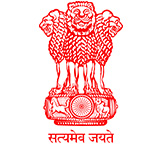Benefits of Comptroller & Auditor General overseeing audit of Public Sector Undertaking banks
By Shri S. Ramann, Accountant General(Audit),Jharkhand,Ranchi
And you thought that this was already happening. If and when it were to happen a measure could be devised to quantify the improvement in quality of assets held by the banking system, 75% of which are held by Public Sector Undertaking (PSU) banks. There would be no change to the current system of Chartered Accountants conducting statutory audit. At a negligible extra cost to the government exchequer, the public sector banks and therefore the country would stand to gain from a supplementary audit by the Comptroller & Auditor General (CAG) of India. This has been conducted for non-bank PSUs over several decades and its salutary impact on the efficiency and effectiveness in receipts and expenditure has been there for all to see, especially since the rise of an activist and responsible media. CAG Audit is an utterly independent exercise as the public auditor conducts itself unfazed by reactions to its findings and maintains its stand irrespective of whether the audit is entrusted to it in subsequent financial years. No other auditing entity has this supreme independence. God bless the Constitution of India and the Supreme Court which recently handed down a landmark judgment in favour of public interest and the role of CAG Audit. It forcefully stated that CAG Audit is a natural corollary to any nexus that may exist between the accounts of any entity, private or public, and the Consolidated Fund of India(CFI). The particular public interest that is discussed in this article lies squarely within such a nexus as the CFI is periodically debited for equity infusion or debt write-offs concerning the public sector banks.
So what is the trigger that calls for this audit?
As taxpayers, we are concerned for both their financial health and the prudence in proposed infusion of capital from budgetary resources. The quality of assets on the books of PSU banks is at best uncertain, and at March 2014, on a base of 46.4 trillion of advances Non-Performing Assets (NPA) of PSU banks were 4.4%, which constitutes 1.7% of GDP. The aggregate NPAs of all banks increased from 0.55 trillion to 2.63 trillion (2.4% to 4% of advances), an annualized increase of 30.5% from March, 2008 to March, 2014. Going by insightful media reports, as at March 2014, the NPAs of 40 listed banks were 2.42 trillion, up from 1.8 trillion in March 2013 or a 33% rise. And these are just the NPAs. Restructured assets at all banks are an additional 3.66 trillion (7.8% of advances).
Where does independent audit fit in?
The stink of NPAs has led to banks selling them at higher values to Asset Reconstruction Companies (ARC) in order to reduce the stain on their balance sheets. The largest ARC is substantially owned by the very bank that transacts NPAs with it. Does this violate Related Party Transactions that figure prominently in corporate governance norms? A regulatory dispensation to provide for NPAs over four years only brushes under the carpet the problem of their valuation and comments by the auditor are rarely discussed? Enter Security Receipts (SR). An NPA that is inconvenient to be sold at a significant loss is now sold at an inflated value to an ARC with SRs as the consideration, in what is a fully non-cash transaction. SR is an investment in debt paper by the bank. So an NPA is converted into an investment, which magically is classified as low risk, sans any provisioning norms that had hovered around the asset. But the underlying asset is the same and is now held by an ARC and serves as security for SRs held by the seller of the asset. Was it not impaired due to which the bank was getting palpitations and losing sleep? The catalyst of this transformation is the rating agency that classifies the SR as AAA or whatever alphabet soup of their choice. This dark alchemy taking place in broad daylight within a legal garb was described as ‘financial incest’ by a well known commentator in a widely respected newspaper, much to the chagrin of the regulator.
Common sense would nail the transformation of an NPA into a respectable investment as a sham. Does the NPA, ARC and Rating agency nexus ring a bell?
The global financial crisis of 2007-08, in its climax saw the most risky tranches of high risk loan portfolios being bundled together to form CDOs which were rated by the best of the breed (amazingly they still live) as AAA and sold as investment instruments to the wider unsuspecting world. It was alchemy of the cleverest kind that best represents the white collar crime at Wall Street. India and its regulators had sailed through unsullied and smug. But the current message that emanates from Mint road is refreshing as the fight against NPAs is being led from the top with speech by the RBI Governor replete with references to anomalies of ‘rich promoters and bankrupt companies’. The very same person is credited with the premonition regarding holes in the US financial system during a conference from the hallowed precincts of Jackson Hole, a meeting of the ‘who is who’ of the financial community in USA. His was a contrarian call that detected and sounded an alert; always a brave and difficult act in the midst of euphoria in the financial sector and adulations heaped upon the Regulators.
Banking companies may be constructively better off with an audit by the CAG than to have the other two Cs (CBI and CVC) of the much maligned troika strike fear in the hearts of our public sector institutions for practices that are often labeled as ‘compromise of the public interest in favour of private gains’. Despite adequate warnings from experienced commentators and even such pernicious lending practices continue. This can be arrested by a CAG Audit that could assist banks in presenting their NPAs more realistically, which only a foolhardy CA would venture to do, as his continued engagement is often a function of his comments. The PSU banks could even lean on the adverse comments of a CAG audit to seek refuge from giving out further bad loans that are often stated to be done at the behest of political interference. For example paragraph 15.3 of the Audit Report for 2012-13 on the Central PSUs gives evidence of audit alerting a company of the loss of 137 crore due to tardy sales procedures and wrong discounts. This is just one among several hundred correctives provided by the Audit Reports to its clients across Central and State governments. Willful defaulters and suspect lending practices suck in precious resources of the government, much like a black hole. To compound this the RBI as the banking regulator admits to not being an investigative agency thus leaving the onus of cleaning up a public mess to the CVC and CBI. The moot point being stressed is that CAG Audit can sound the early warning and reduce the stress upon the system and its hardworking bank employees.
Loss recognition has a deathly certainty to it. But it is better to act now than face the wrath of the Parliament in the form of a JPC, that may leave the regulator with no place to hide when questioned about its supervisory role. If government desires to retain control over PSU banks then the natural corollary should be to get an auditor who can protect public interest as well as the taxpayers hard earned money that seems to end up in all the wrong places.
|







